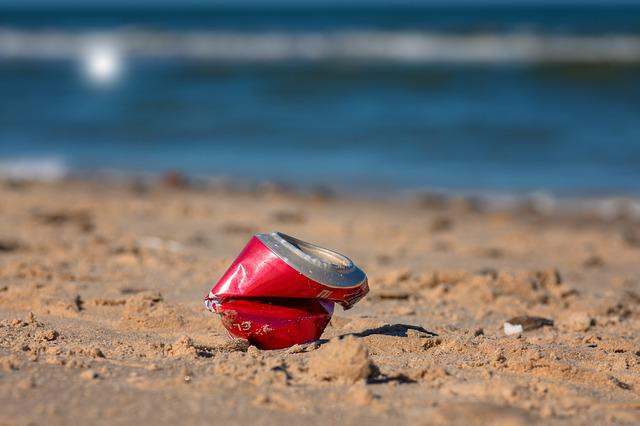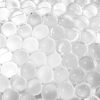With the arrival of the holidays and the consequent population of the beaches, Every year the problem of plastic waste abandoned in the sea arises again.
This is a very complex topic, which is often treated with a certain superficiality, without considering what the real risk factors are.
With this article we would like to shed some light on the issue, precisely because we think it is right to disseminate correct information on the real state of things..
Marine pollution: the main causes
It may seem obvious to some, but the first and most important cause of waste dispersion in the environment (seas, oceans and land) is man.. This simple concept actually brings us back to a very strong assumption of responsibility: any waste we see on beaches and in the seas (or on the streets) has been put there by a consumer who has deliberately decided to disperse it in the environment instead of throwing it in the designated containers.
So one of the first solutions to the problem of waste in the seas and on the beaches is work on educating and raising awareness among people. For many, too many years, the problem of waste dispersion has been underestimated... do you remember that in the 80s there was the fashion of throwing garbage or objects from car windows? It was a cool behavior, which emphasized the carefree nature of those years but what would environmentalists say today?
Furthermore, beaches, even the most touristic ones, are not always (or almost never!) equipped with containers suitable for waste collection.. Therefore, for many people the simplest solution remains to leave them there or disperse them in the environment. Therefore, there is a lack of suitable and widespread structures for waste collection and sorting, another aspect on which countries and governments should work.
Another major factor causing pollution in the seas and on beaches are fishing boats.. Yes indeed: about half of the waste that populates our marine waters is made up of fishing nets and other objects derived from equipment such as ropes, traps and polystyrene, a material widely used in the sector. According to a recent study by Fedagripesca-Confcooperative, if the Italian fishing fleet brought ashore all the waste that gets caught in the nets every day, in 10 years the sea would be cleaned of 30 thousand tons of waste (Source: ANSA).
Not only that, cruise ships and tourist ships also represent a major polluting engine. Some scholars have monitored the waste situation of a remote island in the Atlantic Ocean for decades. Until the 1980s, it came mainly from the mainland, transported by sea currents. In recent years, however, the objects found are of very recent production, in particular PET bottles produced in Asia and also widely used by sailors. This confirms that ships and boats are often emptied (probably to create more space) and the waste thrown directly into the sea.
Only plastic in the seas and on the beaches? Let's dispel some myths
When we talk about beach pollution, we almost always refer to plastic, such as bags, straws and bottles. But is that really the case? Not really. According to a research conducted in Brazil among anthropogenic objects (i.e. produced by man but which risk changing nature) which dominate the beaches, the one made of plastic and which is found in much greater quantities than others are cigarette butts, whose filter is made of a paper wrapper and cellulose acetate, a naturally derived plastic. Then follow food scraps and wooden sticks.
Another myth to dispel is the behavior of industrially advanced countries such as Europe and the United States, which are often considered among the main responsible for global pollution. As regards the plastics sector, It is true that Europe and the United States are among those who produce the most plastic on a global scale but it is equally true that they are also among those who recycle the most of it. So shouldn't we pay more attention to those countries, like China and India, that do not adequately manage plastic waste, and are therefore among the main responsible for environmental pollution?
Finally, fortunately the situation on the beaches is slowly but steadily improving.. The peak of pollution levels was reached in the 2000s and then began to decrease. According to an OSPAR report, in particular between 2010 and 2015 the level of pollution on beaches decreased significantly and the decreasing trend remains constant.
What actions are possible to improve the situation?
As we anticipated in the introduction, the problem of pollution of seas and beaches is not easy and quick to solve. And we are also certain that action should be taken on several fronts. Furthermore, the crux of the matter is not the material itself: There are different types of polymers that, depending on their composition, can be recycled infinite times and allow the product to always be given new life.
Of course, the real turning point would be if all people (or at least most of them) adopted correct behavior and avoided waste dispersion, and we are not just referring to plastic. This is not a foregone conclusion: the greatest revolution in terms of improving the environment should start by correcting incorrect behaviors. How? We need to act at a global level of awareness and spread a truthful, sensible culture that addresses the issue at its root.. And this awareness should also be spread to all the subjects involved (do you remember the fishing boats?) and the governments of the individual countries. And we must also punish offenders more: from producers to consumers, up to the nations themselves, probably if the consequences of such behaviors were higher, certain behaviors would also be inhibited or reduced.
Finally technology and research: it is essential that all governments and companies involved in this sector continue to invest in research and development of new technologies and materials that are increasingly eco-friendly.
What does Teamplast do to respect the environment?
We at Teamplast never tire of trying to raise public awareness and our most direct stakeholders on the correct use of plastic materials and have been doing so for many years now. We use polymers that are 100% recyclable. We often produce articles even using pre-consumer plastics, that is, they derive from industrial waste and the entire production process is aimed at reducing waste and rather at reusing materials after their disposal. We have equipped each department with waste disposal areas, we deliver waste paper and cardboard to specialized companies for recovery, as well as some types of plastic that we are unable to recover and reuse internally. We have abandoned disposable rags and we rely on reliable partners who wash the dirty ones and return them to us clean, so as to avoid creating further waste. We recover various production liquids from the printing department, as well as the few oils that come from machinery waste..
For several years we have equipped our factories with photovoltaic systems and we optimize travel with our means of transport thanks to better management of movements.





